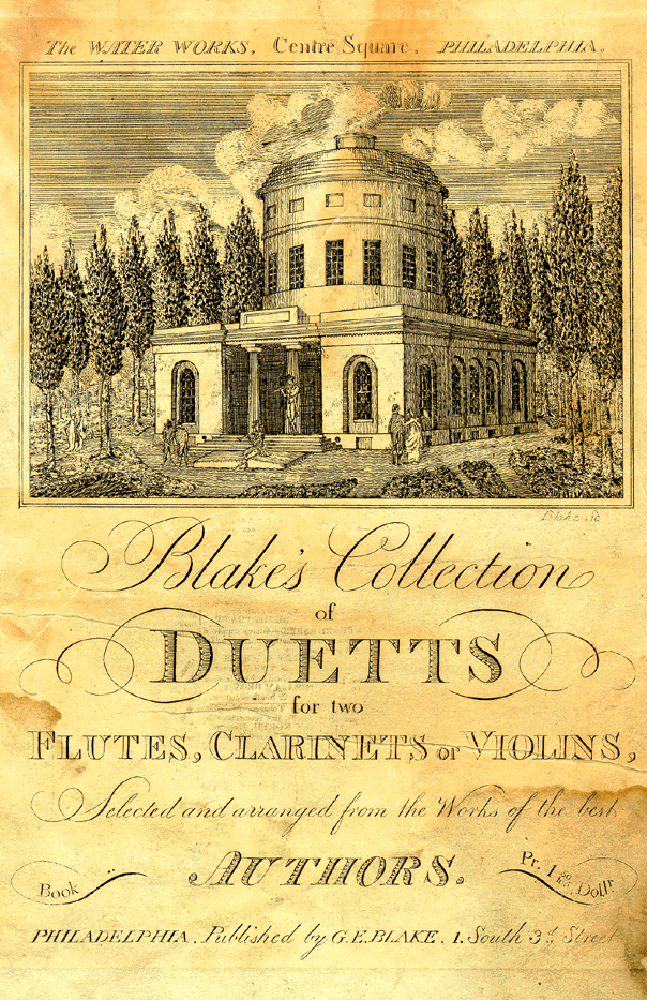- George E. Blake
thumb|The_title_page_of_Philadelphia circa 1807. The engraving features one ofBenjamin Latrobe 's waterworks buildings in Philadelphia's Center Square.] George E. Blake (1775 –February 20 1871 ) was an American music engraver and publisher. He was born inYorkshire ,England and, according to hisobituary in the "Philadelphia Evening Telegraph ", emigrated to the United States when he was sixteen. [Quoted in Bewley.] Other sources disagree on the exact year he arrived in America. [Metcalf (172) states that he arrived in 1793, while Krummel puts the date at "before 1793".] What is clear though is that by 1793, he began teaching theflute and theclarinet inPhiladelphia , operating out of a room above the shop of music publisher John Aitken. During this period, the city was being ravaged by an outbreak ofyellow fever . Unlike many others, Blake chose to stay instead of fleeing the city.Metcalf 172.] He remained in Philadelphia for the rest of his long life.In 1802, Blake acquired the rights to
piano makerJohn Isaac Hawkins ' factory. By the next year, he had published his first piece of music, and by 1810, he was advertising his services by claiming that he had the largest assortment of music in the country. At the height of his career, from about 1810 to 1830, he was considered one of the most prolific music publishers in the United States.Krummel.] He was one of the first to publish full scores of Americanmusical theater , including the popular 1810 musical by John Bray and J.N. Barker, "The Indian Princess".Sanjek 51.] One of his greatest early achievements was a complete edition ofThomas Moore 's "Irish Melodies", which Blake first published in 1808 and continued printing until 1825. During the 1820s and 1830s, he undertook what was then the most ambitious music-publishing project in the United States: the complete vocal works ofGeorge Frideric Handel in piano-vocal score over fifteen folio volumes.Bewley.] In around 1830, he published the first American edition of Handel's "Messiah". His publications throughout his career were diverse: he printed songs of the Philadelphia theater (based on London theater music),opera libretto s, original American compositions, political songs, excerpts from Italian opera, andminstrel music. By the 1850s, Blake stopped publishing music, although he continued operating out of his small store on Fifth Street and selling his earlier publications.Notes
References
*Bewley, John. [http://www.library.upenn.edu/collections/rbm/keffer/blake.html Philadelphia Music Publishers: George E. Blake (1775-1871)] .
University of Pennsylvania Library's Department of Special Collections. Retrieved onJanuary 25 ,2008 .
*Krummel, Donald W. "Blake, George E.". " [http://www.grovemusic.com Grove Music Online] " (subscription required). ed. L. Macy. Retrieved onJanuary 26 2008 .
*Metcalf, Frank J. (2007). "American Writers and Compilers of Sacred Music". READ BOOKS. ISBN 1406751448.
*Sanjek, Russell (1988). "American Popular Music and Its Business: The First Four Hundred Years". Oxford University Press. ISBN 0195043103.External links
*worldcat id|id=lccn-n85-9074
Wikimedia Foundation. 2010.

